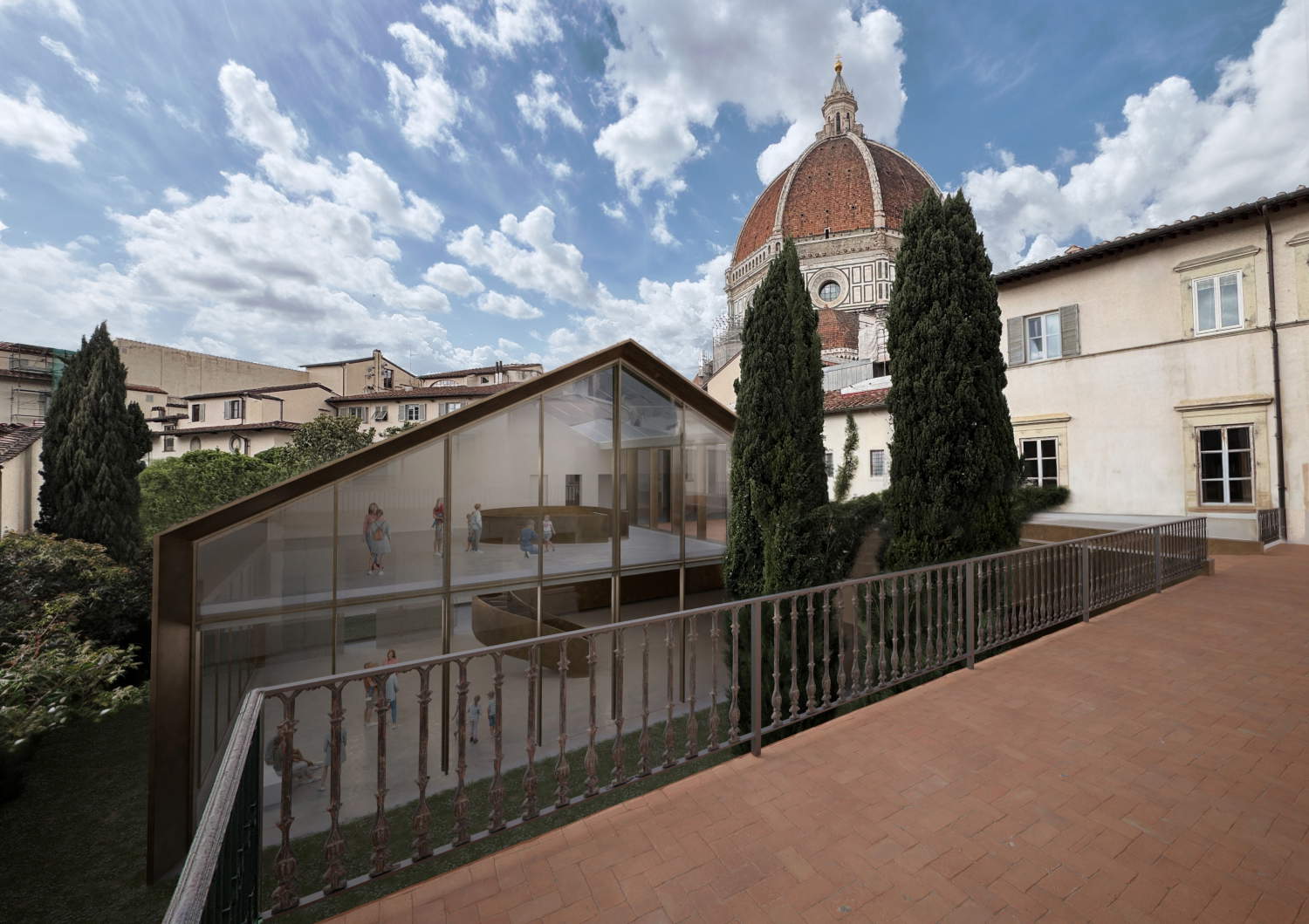Florence's Museo dell'Opera del Duomo expands: green light for project
The Florence City Council has approved a project to expand the Museo dell’Opera del Duomo. This intervention, made possible by the acquisition in February 2023 of the nearby Palazzo Compagni, a historic property bordering the museum, by the Opera di Santa Maria del Fiore, is aimed at improving the cultural offerings of the museum, which already houses a unique collection of medieval and Florentine Renaissance sculpture.
The expansion will increase the exhibition area from 6,000 to 11,000 square meters, including space for temporary exhibitions, a conference room, a garden cafeteria and new visitor services. The project, entrusted to the architects Guicciardini & Magni, who together with Adolfo Natalini had designed the current museum, will also include a more linear and organic exhibition itinerary and the display of works conserved in storage as well.
Interventions and authorizations
Palazzo Compagni, a historic building whose origin dates back to the thirteenth century, will undergo restoration work and a plant upgrade. These are interventions already authorized by the Archaeological, Fine Arts and Landscape Superintendence at the end of 2023. A significant intervention will be on the building body present inside the garden, dating back to the 1920s, in place of which a cafeteria will be built. The building, which does not have the constraint of historical interest, will be built thanks to the exemption issued by the City Administration. The museum project includes, the demolition of this building, which is in poor structural condition, and the reconstruction of a new building that follows the same footprint in plan while maintaining the same height, but changing the conformation of the roof to create a covered area and a terrace. The design idea also involves connecting the terrace of Palazzo Compagni with this new terrace in order to create a single unified outdoor path from which to admire Brunelleschi’s Dome.

The Florence City Council’s resolution
The resolution of the City of Florence, presented by Councillor for Urban Planning Caterina Biti, highlights the social, cultural and enhancement purpose of the cultural and monumental heritage of the Opera di Santa Maria del Fiore and that the reorganization of the Museum stems from the need to expand the exhibition spaces, including for temporary exhibitions, and those dedicated to visitor services. For these reasons, the public interest of the project has been recognized, with an attached exemption from urban planning regulations and zeroing of primary and secondary urbanization charges and construction cost.
“This is a truly major intervention,” stresses the City of Florence’s Councillor for Urban Planning Caterina Biti. “Not only does it affect a valuable building that with this project is redeveloped, but it also allows an important expansion of the cultural proposal with the possibility of setting up temporary exhibitions, hosting conferences without forgetting the attention to visitor services and opening to the city.”
“This operation,” says Opera di Santa Maria del Fiore President Luca Bagnoli, “has two purposes: one cultural and the other of social responsibility on the city’s building heritage. We have purchased a historic building that was destined, like so many others, to the real estate market for rent or sale and we are thus giving it back to Florence.”
The history of the Museum and Palazzo Compagni
The Museo dell’Opera del Duomo, founded in 1891 and renovated and expanded in 2015, holds 750 works including statues and reliefs in marble, bronze and silver, including masterpieces by the greatest artists of the time from Michelangelo to Donatello, Arnolfo di Cambio, Lorenzo Ghiberti, Andrea Pisano, Antonio del Pollaiolo, Luca della Robbia Andrea del Verrocchio. Among the most famous works on display in the Museum: Michelangelo’s Pieta Bandini, the three monumental Baptistery Doors including Lorenzo Ghiberti’s Gate of Paradise, and some of Donatello’s masterpieces such as the Prophets and Magdalene.
The history of Palazzo Compagni dates back to the 13th century when the Cresci family owned the complex. In 1525 it passed first to the Libri and then to the Alessandrini family, who owned it until the mid-eighteenth century (1748) when it passed to the Compagni family. On the death of the last descendant (1808) the property was inherited by the Naldinis and then purchased by the Martinis, who owned it at the time of Federico Fantozzi. Later the palace passed from other properties and in 1929 was acquired by the National Accident Fund. The palace appears in the list compiled in 1901 by the General Directorate of Antiquities and Fine Arts as a monumental building to be considered national artistic heritage.

 |
| Florence's Museo dell'Opera del Duomo expands: green light for project |
Warning: the translation into English of the original Italian article was created using automatic tools. We undertake to review all articles, but we do not guarantee the total absence of inaccuracies in the translation due to the program. You can find the original by clicking on the ITA button. If you find any mistake,please contact us.



























